When the Grass Just Won’t Grow
(Note: If you missed last week’s story here in e-gardens entitled “Growing Grass Beneath Trees,” here is a link back to it https://neilsperry.com/2018/03/growing-grass-beneath-trees/.)
As trees grow larger and larger their shade is likely to choke out your lawngrass. Bermuda fades when it gets less than 8 hours of hot, direct summer sun. Zoysias need 7 to 8 hours. St. Augustine and fescues need 5 or 6. And then there’s bare ground. What can you do if you don’t have enough sunlight, but you long for something more than bare soil?

Photo: Our backyard is heavily shaded by towering pecan trees all summer. Mondograss has proved to be a fine substitute since turfgrass stands no chance of surviving.
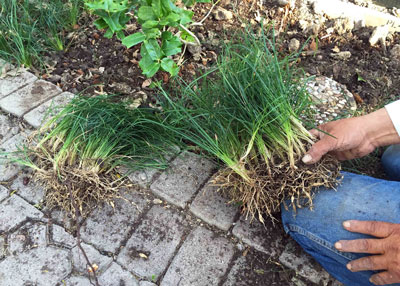
Photo: Mondograss is easily dug and divided so new beds can be planted. This can be done at any season.
• Mondograss, also known as monkeygrass and lilyturf, is the easiest of all the shade groundcovers. It’s been the go-to plant for the Sperry home landscape wherever I needed to replace failing St. Augustine. It grows to 6 to 8 inches deep, and it has a soft, grass-like appearance. It’s good on slopes, and it tolerates anything from heavy shade to half a day (morning) of direct sun. Its flowers are inconspicuous.
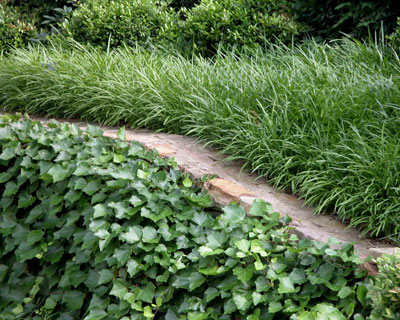
Photo: Liriope groundcover at top of slope holds the soil while English ivy provides nice contrast.
• Liriope is the big sister to mondograss. Liriope’s bolder blades are as wide as a pencil, and its summer flower spikes are lavender (a couple of varieties are white-flowering), followed by large purple-black berries. It makes a nice groundcover or edging if you want something a bit taller than mondograss.
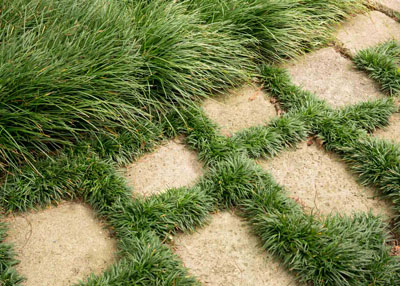
Photo: Regular and dwarf mondograss grow side-by-side in the Sperry home landscape. Metal edging keeps the regular mondo from invading into the walk.
• Dwarf mondograss goes the other direction. It stays less than 3 or 4 inches tall at maturity, making it probably the lowest groundcover we grow. But it’s also slow to spread, so it’s best used as a low border, in rock gardens and other smaller spaces where an extremely sculptured look is desired. It’s also sensitive to poorly drained soils. For all of those reasons, I prefer to use it in small plantings that are less strategic in my gardens.
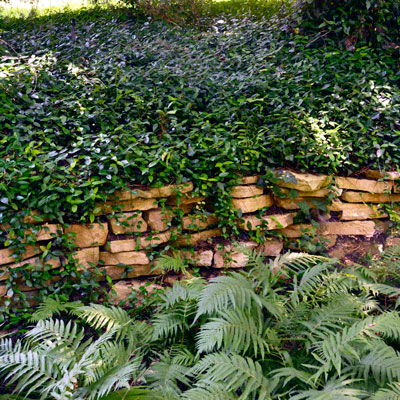
Photo: Asian jasmine and southern wood ferns thrive in heavily shaded portion of the Sperry landscape.
• Asian jasmine has long been the most popular full sun groundcover in Texas, and it’s well suited to shade as well. Do remember, however, that it has wiry stems, and leaves can get caught up in those stems, making blowing leaves in the fall a challenging task.
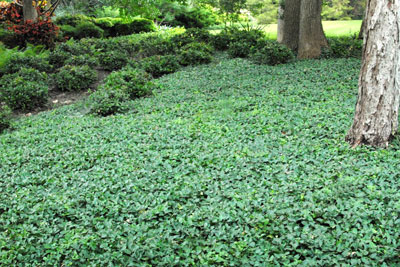
Photo: Purple wintercreeper euonymus has become my new go-to groundcover beneath oaks. It’s green in the summer and maroon all winter long.
• Purple wintercreeper euonymus has become one of the most popular full sun groundcovers for Texas, partly because we’re always looking for something different and partly because it’s more winter-hardy than Asian jasmine. It, too, produces runners, but leaves seem to be more easily removed from it than from Asian jasmine.
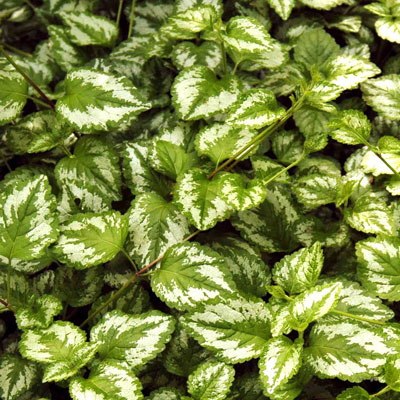
Photo: Lamium, or dead nettle, is a surprising and unusual delight as a shade-tolerant groundcover.
• Dead nettle (Lamium) is an unusual, but dependable option. Ajuga and English ivy are both candidates, but because of disease problems, each should be planted in limited areas.
• Woodferns and aspidistras are two knee-high clumping plants that can be used as tall groundcovers. But that’s where any similarity between the two plants ends. Ferns bring the lightest, airiest texture to their surroundings. Aspidistra leaves are 18 inches long and 4 inches wide. They are ultimately bold-textured. In fact, the two plants are so diverse that they actually look good when planted alongside one another.
